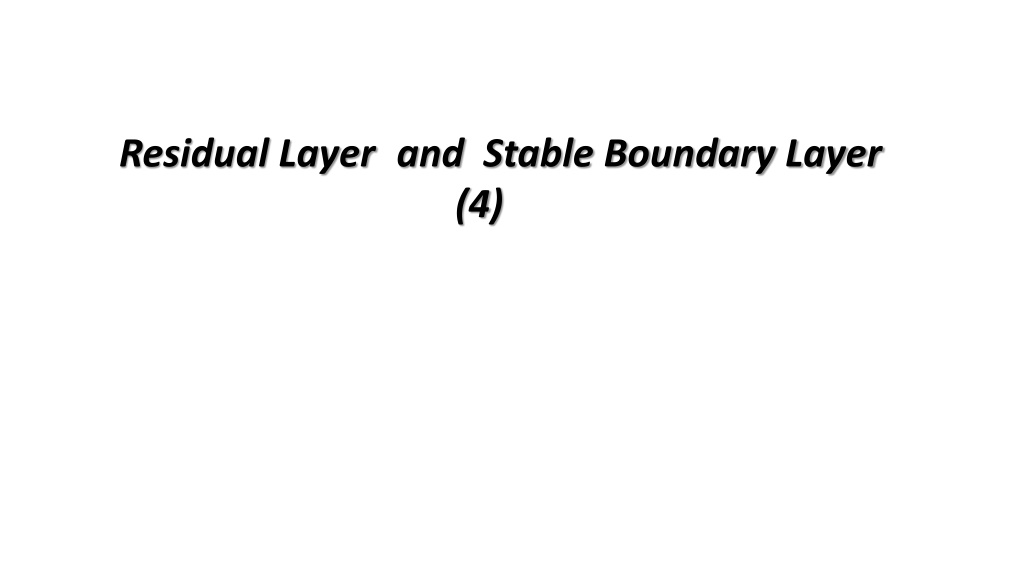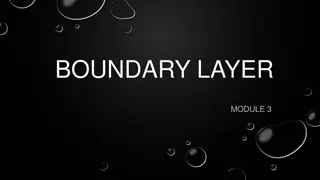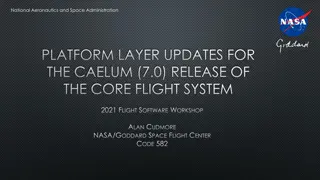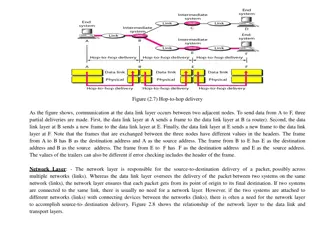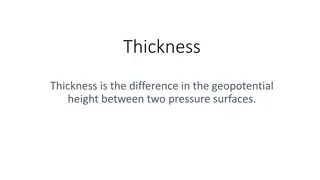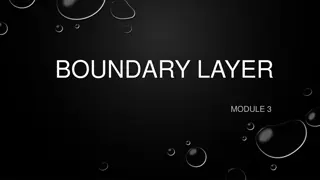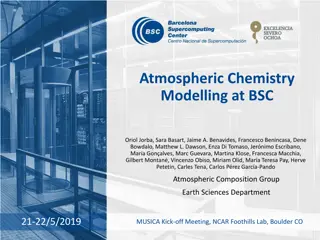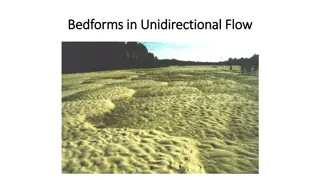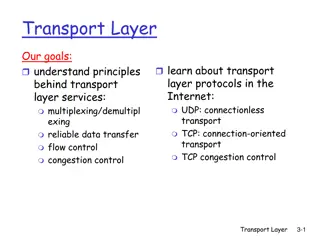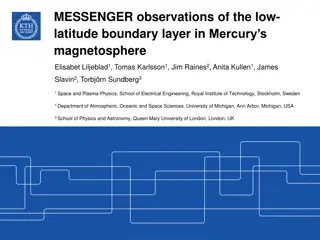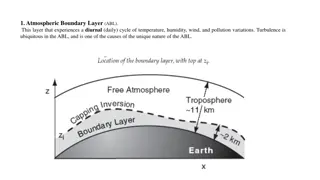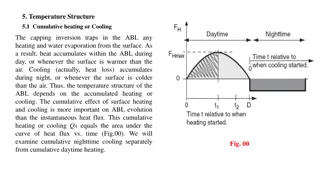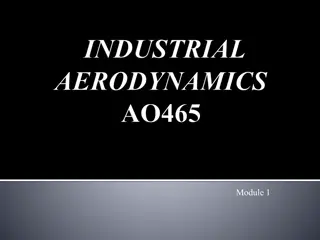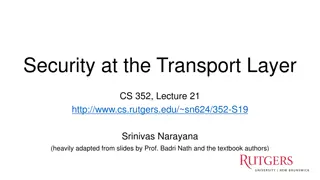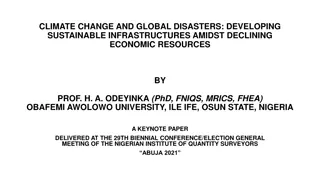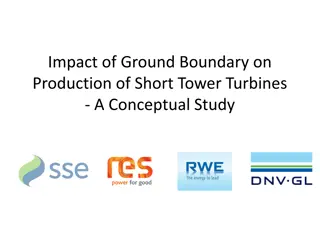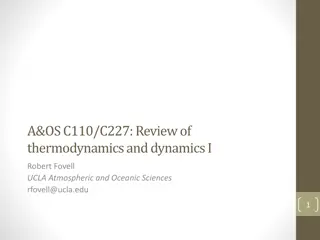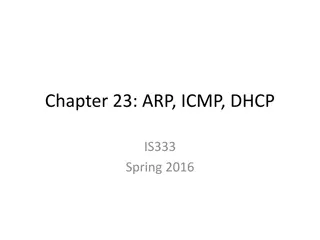Atmospheric Boundary Layer Dynamics and Evolution
The atmospheric boundary layer undergoes transformations from a residual layer to a stable boundary layer through the night, impacting wind behavior and turbulence levels. The virtual potential temperature profile provides insights into these changes.
Download Presentation

Please find below an Image/Link to download the presentation.
The content on the website is provided AS IS for your information and personal use only. It may not be sold, licensed, or shared on other websites without obtaining consent from the author.If you encounter any issues during the download, it is possible that the publisher has removed the file from their server.
You are allowed to download the files provided on this website for personal or commercial use, subject to the condition that they are used lawfully. All files are the property of their respective owners.
The content on the website is provided AS IS for your information and personal use only. It may not be sold, licensed, or shared on other websites without obtaining consent from the author.
E N D
Presentation Transcript
Residual Layer About a half - hour before sunset the thermals cease to form (in the absence of cold air advection), allowing turbulence to decay in the formerly well-mixed layer. The resulting layer of air is sometimes called the residual layer. The RL is neutrally stratified, resulting in turbulence that is nearly of equal intensity in all directions. As a result, smoke plumes emitted into the RL tend to disperse at equal rates in the vertical and lateral directions, creating a cone-shaped plume. Variables such as virtual potential temperature usually decrease slowly during the night because of radiation divergence. This cooling rate is on the order of 1 C/100m. The cooling rate is more-or-less uniform throughout the depth of the RL, thus allowing the RL virtual potential temperature profile to remain nearly adiabatic. The RL does not have direct contact with the ground. During the night, the nocturnal stable layer gradually increases in thickness.
Stable Boundary Layer As the night progresses, the bottom portion of the residual layer is transformed by its contact with the ground into a stable boundary layer. This is characterized by statically stable air with weaker, sporadic turbulence. Although the wind at ground level frequently becomes lighter or calm at night, the winds aloft may accelerate to super geostrophic speeds in a phenomenon that is called the low-level jet or nocturnal jet. The statically stable air tends to suppress turbulence, while the developing nocturnal jet enhances wind shears that tend to generate turbulence. The top of the ML is defined as the base of the stable layer, while the SBL top is defined as the top of the stable layer or the height where turbulence intensity is a small fraction of its surface value. Pollutants emitted into the stable layer disperse relatively little in the vertical. They disperse more rapidly in the horizontal. Wave motions are a frequent occurrence in the SBL. SBLs can also form during the day, as long as the underlying surface is colder than the air. These situations often occur during warm-air advection over a colder surface, such as after a warm frontal passage.
Winds exhibit a very complex behavior at night. Just above ground level the wind speed often becomes light or even calm. At altitudes on the order of 200 m above ground, the wind may reach 10-30 m/s in the nocturnal jet. Another few hundred meters above that, the wind speed is smaller and closer to its geostrophic value.
Virtual Potential Temperature Evolution the virtual potential temperature profile is usually sufficient to identify the parts of the boundary layer. The structure of the BL is clearly evident. Fig 1.12 shows the resulting virtual potential temperature profile evolution. Fig. 1.12 Profiles of mean virtual potential temperature. Showing the SBL boundary-layer evolution during a diurnal cycle starting at about 1600 local time. S1-S6 identify each sounding with an associated launch time indicated in Fig.
the virtual potential temperature lapse rate is usually sufficient for determining the static stability. An exception to this rule is evident by comparing the lapse rate in the middle of the RL with that in the middle of the ML. Both are adiabatic; yet, the ML corresponds to statically unstable air while the RL contains statically neutral air. At and shortly after sunrise, surface heating causes turbulent eddies to develop, producing a mixed layer whose depth grows to a maximum depth in late afternoon. In this mixed layer, potential temperature and water vapor mixing ratio are nearly uniform. At the sunset, the deep surface cooling creates a stable (nocturnal) boundary layer, above which is a residual layer, basically the leftover part of the daytime mixed layer Q/ a) Draw the profile of mean virtual potential temperature at sunrise and sunset times, and explain the processes that occurred during these times. b) Draw the profile of mean virtual potential temperature at midnight time, and then sketch the virtual potential temperature profile that you might expect at next four hours.
Micrometeorology Compared to the other scales of meteorological motions, turbulence is on the small end. Figure 1.15 shows a classification scheme for meteorological phenomena as a function of their time and space scales. Phenomena such as turbulence with space scales smaller and with time scales shorter than about I h are classified as microscale. Micrometeorology is the study of such small-scale phenomena. It is evident that the study of the boundary layer involves the study of microscale processes micrometeorology was often associated with surface-layer phenomena.
Boundary-Layer extends from the surface to between 500 and 3,000 m altitudes. Located within troposphere Surface Layer comprises the bottom 10% of the Boundary Layer. Mixed Layer area of the upward and downward motion of air resulting in a very well mixed layer of air. Very unstable Entrainment Zone area between the boundary layer and the free atmosphere. Free Atmosphere area above the boundary layer. Cloud Layer region within the boundary layer where clouds appear. Subcloud Layer region underneath the cloud layer Nocturnal Boundary layer portion of the mixed layer that loses its buoyancy at night. Very stable Residual layer : the remaining portion of the mixed layer at nigh The planetary boundary layer (PBL) is defined as the part of the atmosphere that is strongly influenced directly by the presence of the surface of the earth, and responds to surface forcings with a timescale of about an hour or less Day time boundary layer is usually very turbulent, due to ground-level heating
